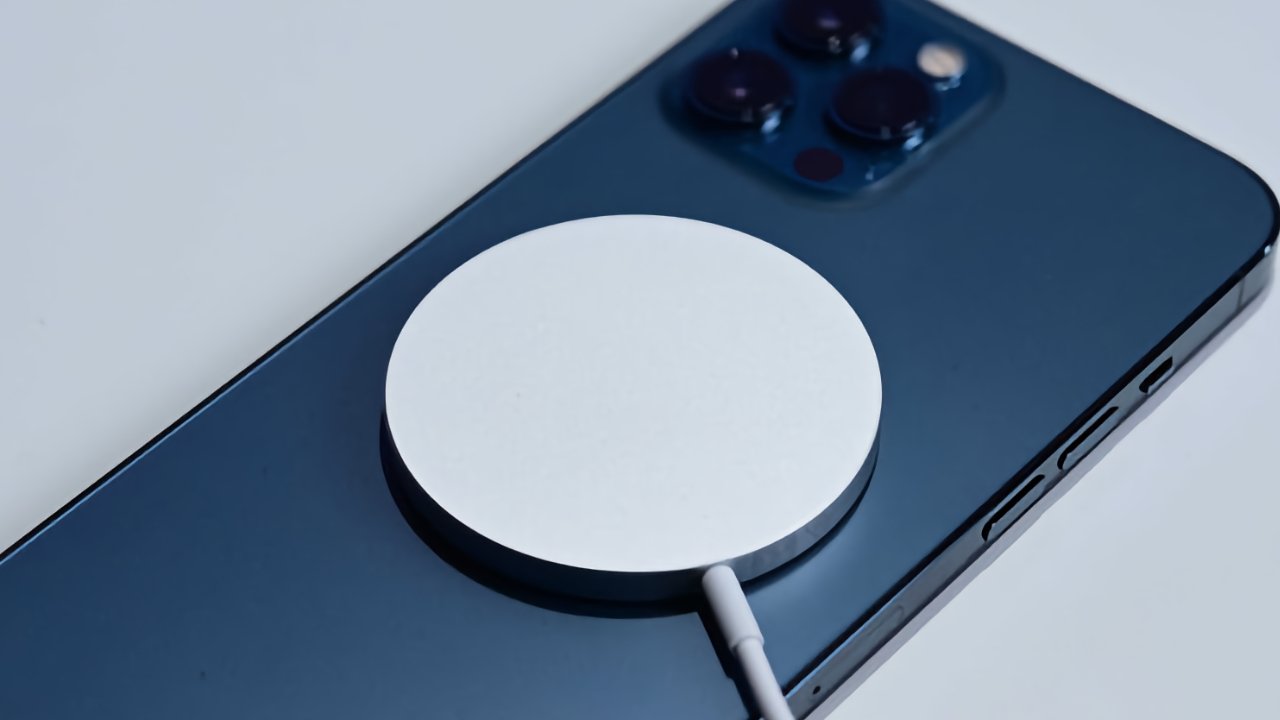Apple has been researching ways to advance MagSafe to carry data wirelessly, plus how to recognize and authenticate accessories when they are plugged in.

Right now, you can place a MagSafe-compatible iPhone onto a MagSafe charger, and it will charge. You can add an MagSafe iPhone case and the phone will still charge through it.
However, Apple says that at present, there are "some drawbacks" to how MagSafe works. "Accessory Devices That Communicate With Electronic Devices," is a newly-granted patent application that lays out the problem, and has solutions that mean making MagSafe smarter.
"For instance, some accessory devices inadvertently form a "heat trap" by virtue of their position on the electronic device," says Apple. "Moreover, advances in processor technology provide faster processing speeds for electronic devices, but generate more heat during operation."
Consequently, Apple says that, "several electronic devices" are designed to "throttle down" the processor when a certain temperature is reached. Depending on the device and on the temperature, some devices may shut themselves down.
"Accordingly, some users are required to choose between protecting their electronic device (with the accessory device)," continues Apple, "or permitting greater processing capabilities (without the accessory device protecting their electronic device)."
Apple proposes that the electronic device, such as an iPhone, contains "a magnetic field sensor configured to detect a magnetic field from a magnetic assembly external to the housing." In other words, the iPhone would be able to recognize when there is a MagSafe accessory attached.
More, the iPhone could "compare the magnetic field detected by the magnetic field sensor with a predetermined magnetic field." The iPhone could therefore distinguish between, say, a MagSafe charger, and a MagSafe iPhone case.
Knowing the difference, the iPhone's charging components could switch off charging at different temperatures. It would have a lower temperature threshold set for when the iPhone was in a case, for instance.
This suggests a comparatively crude recognition compared to more elaborate ones in the same patent application. This first level of recognition could presume a case or a bare charger, without explicit identifying data being passed to it.
Apple suggests a second level of recognition, though, in which data is passed through the MagSafe system in an accessory.
"The accessory device may further include a wireless communication circuit disposed in the bottom wall," says Apple. "The wireless communication circuit may be configured to transmit information to the portable electronic device subsequent to an authentication based upon the magnetic field vector."
Detail from the patent applications, showing MagSafe on a future iPhone that can read data from it
Apple implies that the MagSafe accessory could inform iOS of its tolerances, for instance, but the patent application is more concerned here with how data can be transmitted.
Once data can be sent via MagSafe, though, it opens up whole other areas of utility. This proposal already contains that reference to "an authentication based upon the magnetic field vector," for instance, and that could be expanded on.
An iPhone might first recognize that a MagSafe accessory is close, then look for any kind of data that could be on it. That data could comprise identification, meaning that through this same system, MagSafe could be used as a key.
These features may not be limited to the iPhone, either. Separately, recent rumors have claimed that the iPad will gain MagSafe.
